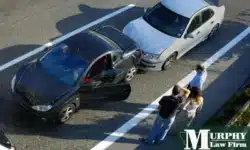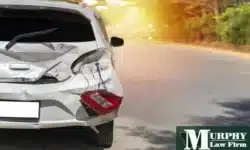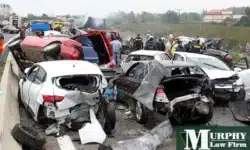Generally, a property damage claim involves two insurance carriers: your insurance (first party) and the liability insurer (third party insurance). So who is responsible to pay, and how much should they pay? The first question to ask is who is at fault for the accident.
If you are involved in an accident where the other party caused the collision, that person’s liability insurance coverage is responsible for payment of your property damage. This is known as a third party property damage claim.
If the accident does not involve another driver, involves an uninsured driver, or if you are responsible for causing the accident, you can recover property damages under your comprehensive or collision coverage. This is called a first party property damage claim.
The type of claim, or claims, which you pursue determines the right and extent of your recovery – but what are these rights?
Third party insurance claims are governed by Montana’s tort law. Generally, the liable party, or tortfeasor, is required to pay the full amount of money that will reasonably and fairly compensate the injured party for his/her loss. These claims include compensation for incidental damages such as towing, storage fees, destruction of personal property contained within the automobile, and loss-of use damages, loss of value, etc.
First party property damage claims are governed by the contract between the auto owner and the insurer. This contract is called the insurance policy. Unlike third party claims, the policy sets forth limitations and exclusions on recovering property damage. For instance, the policy can limit whether payment is made directly to the insured or to the auto repair shop, what parts can be used, deductibles, rental vehicles, etc. Generally, you can only recover the value of repair on your vehicle. Most first party insurance carriers limit all incidental damages (storage, towing, rental, etc). If you file a first party claim, and your insurer will not pay for your property damage, ask them to provide you written denial citing to the specific provision in the policy that excludes the coverage.
In Montana, we often see provisions in automobile insurance policies violate public policy. For example, all insurers (first and third party) must pay for the full cost of repairs to your vehicle, which is not necessarily “book” value. Therefore, if the repair can be done for 90% of the value of the vehicle, then the insurer has to pay for the full cost of repair even if it has an exclusion to the contrary.
Another improper insurance technique is when an insurer tries to designate the repair shop or mechanic. Montana law does not permit an insurer to select or designate the repair shop that must be used. The choice of who will repair a vehicle is left entirely up to the consumer. See, Safeco Ins. Co. v. Munroe v. Cogswell Agency, 527 P.2d 64 (1974). These rights are guaranteed by law, and cannot be contracted away.
Handling insurance property damage claims are often complicated, and many insurers will try and take advantage of unrepresented claimants. It is important to know your rights, so you are not left with the bill, or with unfair compensation for the loss of a good vehicle. Montana allows you to recover attorney fees if you must file an action involving solely the recovery of property damages (See, Montana Code Annotated 25-10-303). The purpose of this statute is to encourage defendants, and insurance companies, to fairly negotiate and not stone wall people who believe their property damage is more than simply the “book” value.
If you think an insurer is unfairly handling your property damage claim, and you would like a free initial consultation with an experienced staff member at Murphy Law Firm, call us today at (406) 452-2345, or visit us on the web at murphylawoffice.net.



